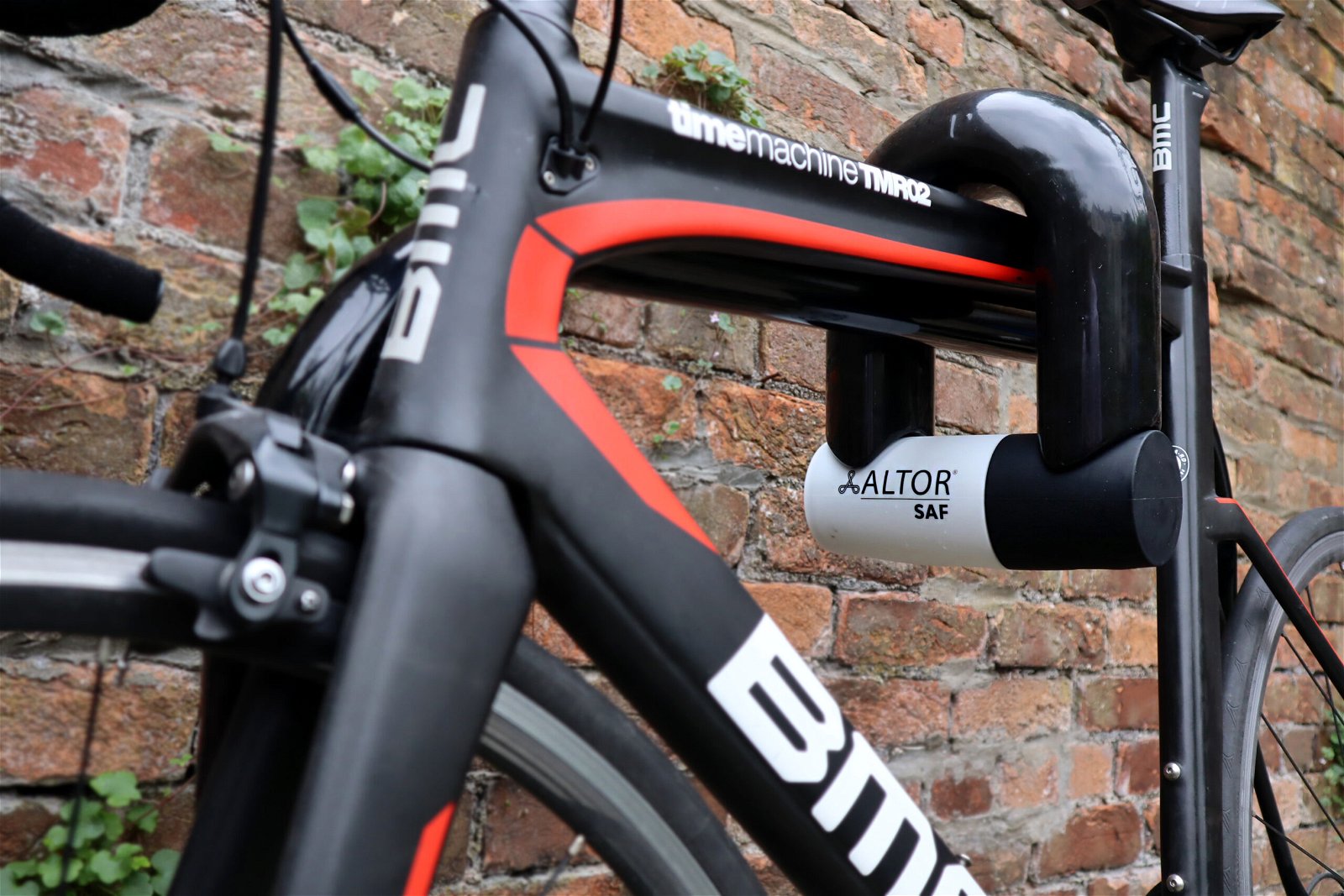An Introduction to Rickshaws
Rickshaws are a popular method of transport in many countries across the world. These often pedal-powered vehicles are especially popular in cities and urban areas that attract crowds of tourists.
But what is a rickshaw? Is a rickshaw a bicycle? and are rickshaws safe to ride?
If you’re looking to find out more about rickshaws, keep reading. I’ll explain everything there is to know about this interesting method of transport and will let you know how to stay safe whilst riding one!
What is a rickshaw? Let’s find out!

What Is a Rickshaw?
First seen in Japan during the 1860’s rickshaws were traditionally a two-wheeled means of transportation pulled by a person on foot. Later rickshaws evolved to incorporate bicycle components and be pedal-powered.
In the modern-day, rickshaws are typically built on a tricycle-like framework, with a seat or carriage on the back or to the front of the driver that people can sit on. In English speaking countries rickshaws are often referred to as “pedicabs”.
Some rickshaws now feature an electric motor to help assist the driver when carrying multiple passengers or on steeper hills.
Are you mistaking rickshaws with tandem bikes? Tandem bikes include pedals for all riders onboard, whereas a rickshaw is solely powered by one driver.
What Is a Rickshaw Used For?
A rickshaw is used to transport passengers, typically in large cities. Rickshaws are often associated with Asian countries, but rickshaws are used all over the world, usually in downtown urban areas.
In English-speaking countries, cycle rickshaws are often called “pedicabs” and may be decorated for aesthetic reasons or with advertisements.
Rickshaws are used as a method of transportation and are especially popular with tourists as their slower pace is good for sightseeing.

Otherwise, locals can use a rickshaw to travel, however, they’re not normally used for commuting as they’re much slower than a taxi or private car.
Rickshaws come in various styles and layouts and may have an enclosed passenger area or a seat that is exposed to the open air, with a driver in front or behind the passenger seating.
The number of passengers that a rickshaw can carry varies, with some rickshaws carrying a single passenger, and others offering multiple rows of seating.
History of Rickshaws
Rickshaws built with a bicycle-style frame, first appeared in the 1880s[1] but were not widely used until the 1930s, mostly in Singapore.
Soon, they outnumbered foot-powered rickshaws, and by 1950 they could be found throughout Asia. In the late 20th century, there were over 4 million cycle rickshaws worldwide.
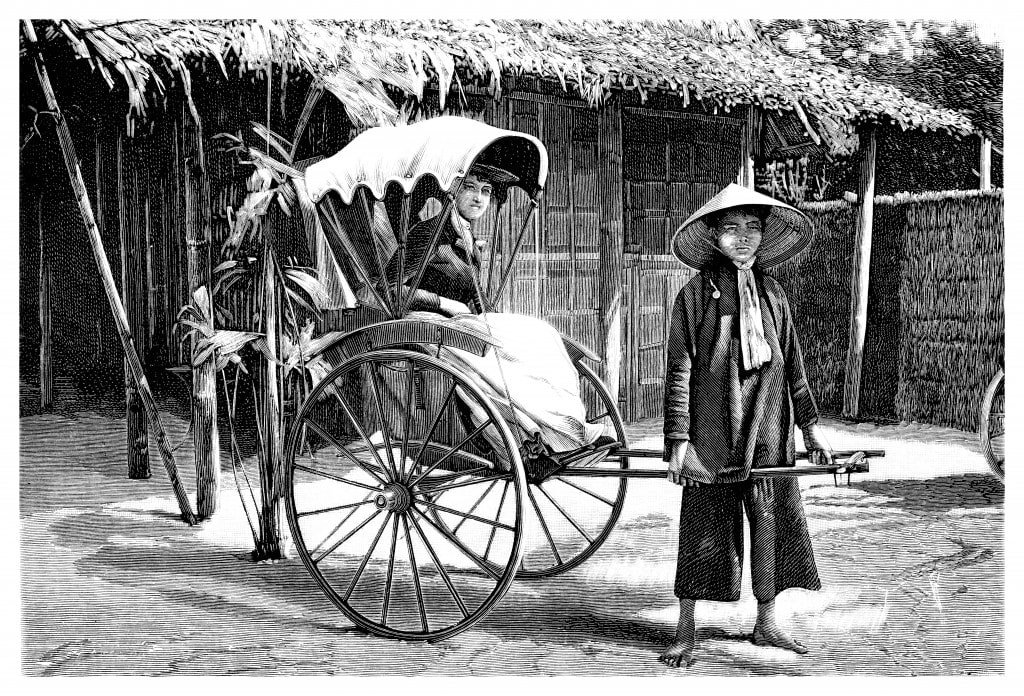
Rickshaws spread from Asia to cities all over the world and can currently be found in most large cities, with pedicab drivers replacing taxis in some places.
This is especially common in areas with many streets closed to most motorized traffic, where tourists love the novelty of riding them. There are many slang names for rickshaws since they are found in nearly every country.
How Have Rickshaws Progressed Over the Years?
Over the years, cycle rickshaws have evolved to add electric motors to assist the driver in pedalling uphill or when there are multiple passengers.
The basic design has remained mostly the same throughout the history of the cycle rickshaw. Still, variations are often found that change the seating arrangement or add shelter for the passengers.
Some countries, such as the Philippines, have a sidecar arrangement, where the passenger seat or compartment is located next to the rickshaw driver, rather than behind them.
Who Should Use a Rickshaw?
People who operate rickshaws do so either as a full-time job or as a side gig to make extra money.
Using a rickshaw as a passenger is a fantastic way to explore new areas when travelling or on holiday.
Unlike a cab or rideshare, you usually have a much more open view of what’s around you, so rickshaws have become a great way to see tourist attractions, especially in places where walking is not a feasible option.
Just be careful in areas with busy, dangerous roadways, as rickshaw accidents can and do happen, and some drivers may operate their rickshaws in an unsafe manner.
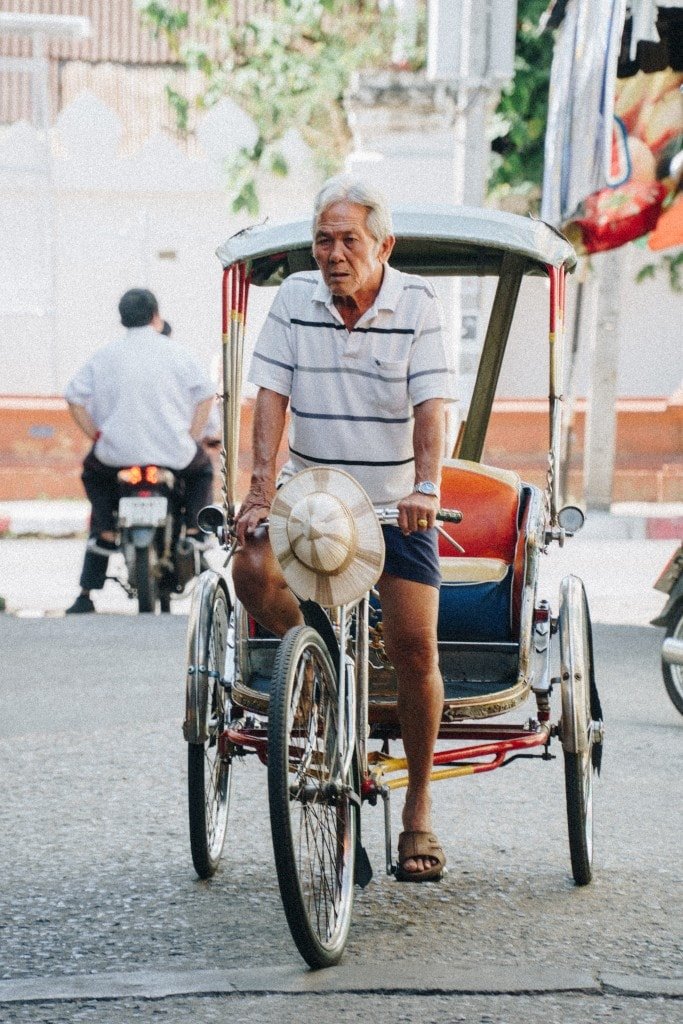
Who Shouldn't Use a Rickshaw?
If you have any existing health issues, such as heart problems or asthma, the additional strain of pulling passengers as a rickshaw driver may not be safe.
It’s a good idea to consult your physician when you are unsure if you should participate in physical activity. You shouldn’t operate a rickshaw if you don’t have a license to do so in cities that require one.
If you are a passenger, you shouldn’t use a rickshaw if you are physically unable to hang on to the rickshaw during the ride, since there are usually no seatbelts and no doors.
You may need to hold on to the rickshaw should a sharp turn come up. If you are not physically fit enough to hold on during a rough ride, it would be unsafe for you to be a passenger in a rickshaw, especially one with an electric motor.
If in doubt, check with your rickshaw driver to make sure you’re suitable to ride, and alert them of any worries you have.
What Competitions/Events are Rickshaws Used In?
Rickshaws have some competitions that mostly focus on auto-rickshaws, such as the Indian Auto-rickshaw Challenge.
Mostly, though, rickshaws are used as an inexpensive and quick form of transportation and are used outside of competitive events.
One of the only, and perhaps largest cycle rickshaw event is the BBC’s annual Rickshaw Challenge with the One Show. The Rickshaw Challenge benefits BBC Children in Need and has raised millions of pounds for the charity.
The challenge’s first year saw Matt Baker (a British television presenter) ride a rickshaw for over 10 hours a day, 480 miles, from Edinburgh to London[2].
In subsequent years, teams of young riders who BBC Children in Need had supported have completed the challenge so that they can give back.
Benefits of Rickshaws
Rickshaws have positives for both the driver and passenger. Below I’ve bullet-pointed the most significant benefits.
- Passengers enjoy rickshaws as an inexpensive way to quickly get around a crowded city, and the driver gets a workout while making some money
- Rickshaws also have a positive impact on the environment, cutting back on emissions by reducing the number of cars on the road
- In areas where cars aren’t allowed, rickshaws are often the only form of transportation that doesn’t require walking
- Large cities often have roads closed off due to the high amount of pedestrian traffic, but they sometimes allow rickshaws to operate where motor vehicles cannot
- Rickshaws are also cheaper than taxis and rideshares, making faster transportation accessible to people who could otherwise not afford it
- Rickshaws are also one of the only ways unskilled workers can earn money in some areas. Although drivers don’t make much, they consider it a vital form of employment that helps people support their families when they may have difficulty finding work elsewhere
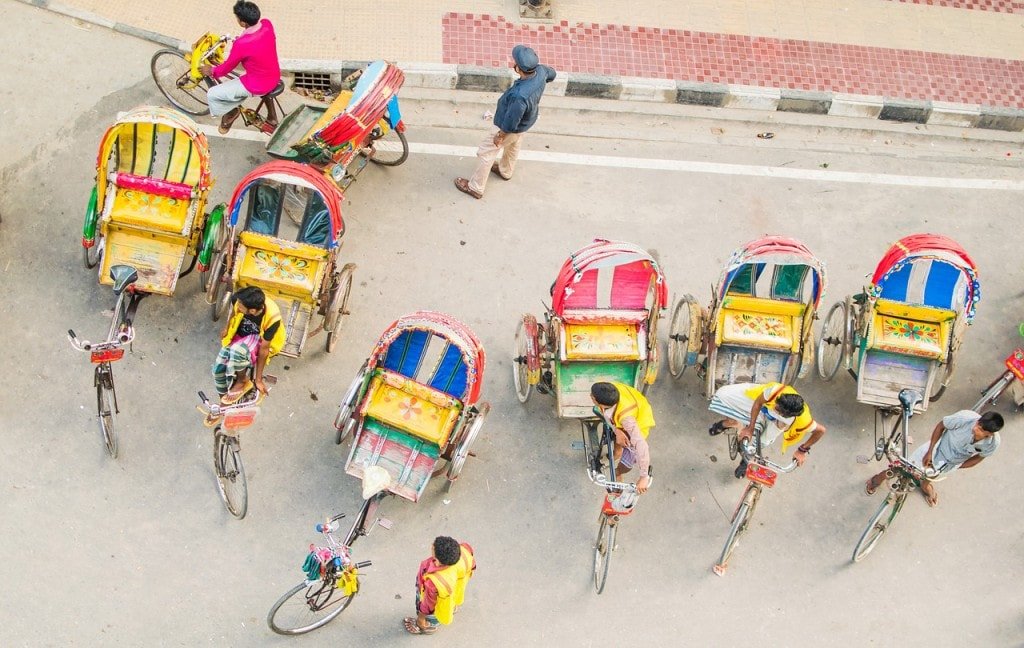
Risks Associated with Rickshaws
In some areas, driving a rickshaw or riding on as a passenger can come with certain dangers.
Many rickshaw drivers, especially electric ones, may venture onto city streets they aren’t supposed to be on, putting themselves and their passengers at risk.
Accidents can happen, especially in crowded cities in India or Asian countries that may not have strict traffic laws. Cycle rickshaws usually have open sides and no seatbelts, so accidents can result in injury.
Do not ride in a rickshaw if you cannot hang on and keep yourself securely seated without a seatbelt or doors.
Environmental Impact of Using a Rickshaw
The environmental impact of using a rickshaw is extremely positive.
Some cities that have undergone a shift from autorickshaws to cycle rickshaws (powered by electric motors) have seen a decrease in smog. Other places have even offered incentives to rickshaw drivers who change from auto- to electric cycle-powered rickshaws.

Rickshaws have less of an impact on the roadways since they weigh significantly less than most motorised vehicles.
This means that cities that can successfully replace a portion of their taxis and other transportation options with rickshaws will save money on infrastructure costs and citizens will benefit from a cleaner environment.
Does a Rickshaw Require a Special Area to be Ridden?
Rickshaws typically don’t require special areas to be ridden, but each city will have its own transportation laws.
Transportation laws will state where rickshaws of different types can be operated. For instance, autorickshaws may be allowed on roads where a pedal-powered rickshaw may not be able to operate at a safe speed.
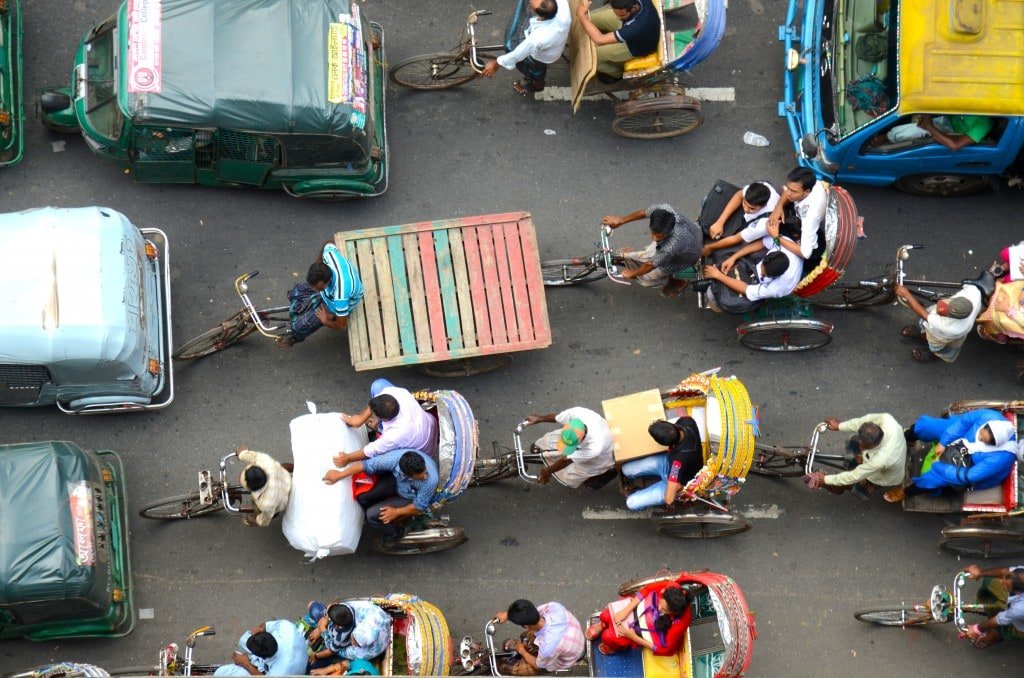
When powered by cycling, with or without electric assist, rickshaws should stay on roads where they can keep up with traffic.
This doesn’t always happen, especially in cities with lax traffic laws, so if you are riding as a passenger, try to find a driver with licensing or one working for a reputable company.
What to Wear When Riding a Rickshaw
While most rickshaw drivers don’t wear helmets, it is recommended, just like with a typical bike or trike.
As a passenger, if you know you’re going to ride in a rickshaw, you may opt to wear long sleeves and long trousers as it can get pretty windy when moving quickly.
Most people, however, do not wear special clothing to ride a rickshaw, but some rickshaw drivers will dress up to attract more tourists.
Drivers usually wear clothing that reflects the local culture’s traditions or flamboyant outfits that will garner attention.
What Accessories are Recommended When Using a Rickshaw?
Rickshaws are often fitted out by their drivers to stand out on the street. Adding accessories such as decorations for the seat, lights, cupholders, or an upgraded battery is a popular way to attract attention from people who need to hail a ride.
Aftermarket electric motors are also extremely popular, allowing the rickshaw operator to work longer hours, accept more passengers, and climb difficult hills, as well as keep up with traffic.
Conclusion - What Is a Rickshaw?
So there you have it, the complete guide to rickshaws! You should now know exactly what a rickshaw is, and the benefits that these awesome vehicles provide.
I hope I managed to answer any questions you may have, but if I missed anything please leave your question below and I’ll get back to you right away!
If you’re interested in learning about different types of bikes, check out my extensive library of bicycle guides, we provide information on almost every type of bike available!
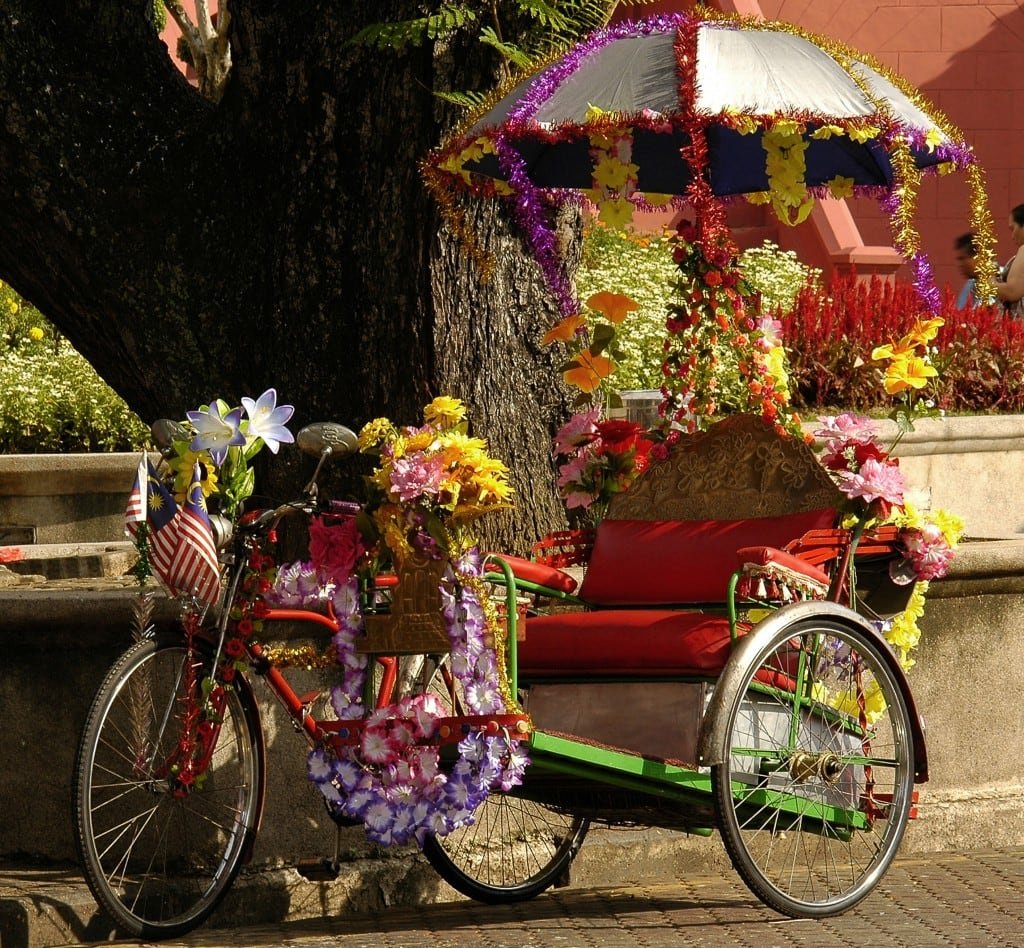
Sources:
[1] https://taiken.co/single/a-history-of-the-rickshaw/
[2] http://www.bbc.co.uk/pressoffice/pressreleases/stories/2011/10_october/24/rickshaw.shtml






